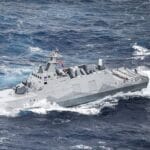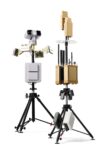As the U.S. Air Force accelerates its Next Generation Air Dominance (NGAD) initiative and the associated Collaborative Combat Aircraft (CCA) program, propulsion is emerging as a critical enabler of performance and survivability. RTX subsidiary Pratt & Whitney is now advancing development of a new class of adaptive-cycle engines tailored for CCA platforms—uncrewed aircraft designed to operate alongside manned sixth-generation fighters.
Adaptive Propulsion at the Heart of CCA Strategy
The CCA program aims to field multiple classes of uncrewed combat aircraft capable of teaming with manned platforms like the NGAD fighter or upgraded F-35s. These drones are expected to execute missions ranging from electronic warfare and ISR to air-to-air combat and strike operations. To meet these diverse demands while maintaining low observability and extended range, propulsion systems must deliver high thrust when needed but also cruise efficiently over long distances.
Pratt & Whitney is leveraging its experience from the Adaptive Engine Transition Program (AETP), where it developed the XA103 engine—a three-stream adaptive-cycle design that can dynamically shift between high-thrust and fuel-efficient modes. While AETP was initially focused on powering future manned fighters such as NGAD or even F-35 upgrades (though Lockheed Martin has leaned toward GE’s XA100), P&W now sees a clear role for this technology in powering CCAs.
XA103 Derivatives Could Power Future CCA Classes
In comments made at AFA’s 2024 Air, Space & Cyber Conference in National Harbor, Maryland, Pratt & Whitney officials confirmed that they are adapting their XA103 engine architecture for potential use in CCA platforms. While specific thrust class targets remain undisclosed due to classification constraints, company executives noted that scaled variants—both smaller and larger—are being studied based on mission profiles.
The base XA103 engine uses an adaptive bypass stream that can be modulated in flight to optimize either thrust or efficiency. This offers significant advantages over traditional turbofan engines by enabling stealthy CCAs to cruise at extended ranges without sacrificing performance when engaging threats or evading detection.
According to Jill Albertelli, President of Military Engines at P&W: “We’re looking at how we scale this [adaptive] architecture into different sizes… We’re working closely with our government partners on what those requirements look like.”
Why Propulsion Matters More Than Ever in Uncrewed Systems
Unlike traditional UAVs such as MQ-9 Reapers or even stealthier RQ-170s—which operate at subsonic speeds with limited maneuverability—the envisioned CCAs will need fighter-like kinematics in some mission sets while remaining affordable enough for mass production and attritable use cases.
This creates unique propulsion challenges:
- Thermal management: High-performance sensors and EW payloads generate significant heat; efficient engine cooling becomes essential.
- Signature control: Engine exhaust must be shaped and cooled to reduce infrared observability.
- Modular scaling: Different CCA variants may require different thrust levels—from small expendables to larger reusable UCAVs.
The U.S. Air Force has not publicly released propulsion specifications for any of its current CCA demonstrators under development by Boeing, Lockheed Martin-Skunk Works, Anduril-Aurora Flight Sciences team or General Atomics Aeronautical Systems Inc., but all are expected to leverage advanced propulsion concepts beyond legacy turbojets or turbofans.
P&W vs GE: The Broader Battle Over Adaptive Engines
The rivalry between Pratt & Whitney’s XA103 and GE Aerospace’s XA100 has dominated headlines since both companies completed prototype testing under AETP funding. While GE claims superior thermal management and faster integration timelines—especially into F-35 airframes—Pratt counters with deep integration experience across multiple USAF fleets including F119 (F-22) and F135 (F-35).
The USAF has not yet committed to fielding either engine under full-rate production contracts but has signaled interest in leveraging AETP-derived tech across multiple programs—including NGAD fighters and potentially even B-21 Raider derivatives or long-range UAVs like CCA.
A key differentiator may be how well each company can scale their architecture down—or up—to meet varying needs across unmanned platforms. In this regard, P&W’s focus on modularity could give it an edge if CCAs emerge in multiple weight classes requiring different powerplants.
A New Era of Modular Powerplants?
If successful, P&W’s approach could usher in a new generation of modular propulsion systems optimized for AI-enabled air combat networks. Rather than designing bespoke engines per platform—a costly legacy model—the USAF could field families of CCAs powered by common core architectures adapted per mission set via plug-and-play modules such as variable nozzles or upgraded thermal management subsystems.
This aligns with broader Pentagon goals around open systems architecture (OSA) and digital engineering pipelines that shorten development timelines while enabling rapid upgrades across fleets via software-defined capabilities—even within propulsion subsystems themselves.
Outlook: Flight Testing Still Years Away
No specific flight test dates have been announced for any Pratt-powered CCAs using adaptive-cycle engines. However, given ongoing prototyping efforts under the CCA program—with first operational units targeted before 2030—it is likely that ground testing of scaled-down adaptive engines will occur within the next two years if not sooner.
Pentagon budget documents from FY2025 request continued funding for advanced propulsion research under both AETP follow-ons and NGAP (Next Generation Adaptive Propulsion), suggesting sustained interest despite fiscal pressures elsewhere in DoD modernization portfolios.
Conclusion: Propulsion as a Strategic Enabler
The success of Collaborative Combat Aircraft will depend heavily on their ability to combine stealthy survivability with flexible mission execution—and none of that happens without reliable next-gen powerplants. With its XA103 heritage and ongoing investments into scalable adaptive-cycle technology, Pratt & Whitney positions itself as a key player shaping how future unmanned airpower takes flight alongside manned assets in contested environments.









